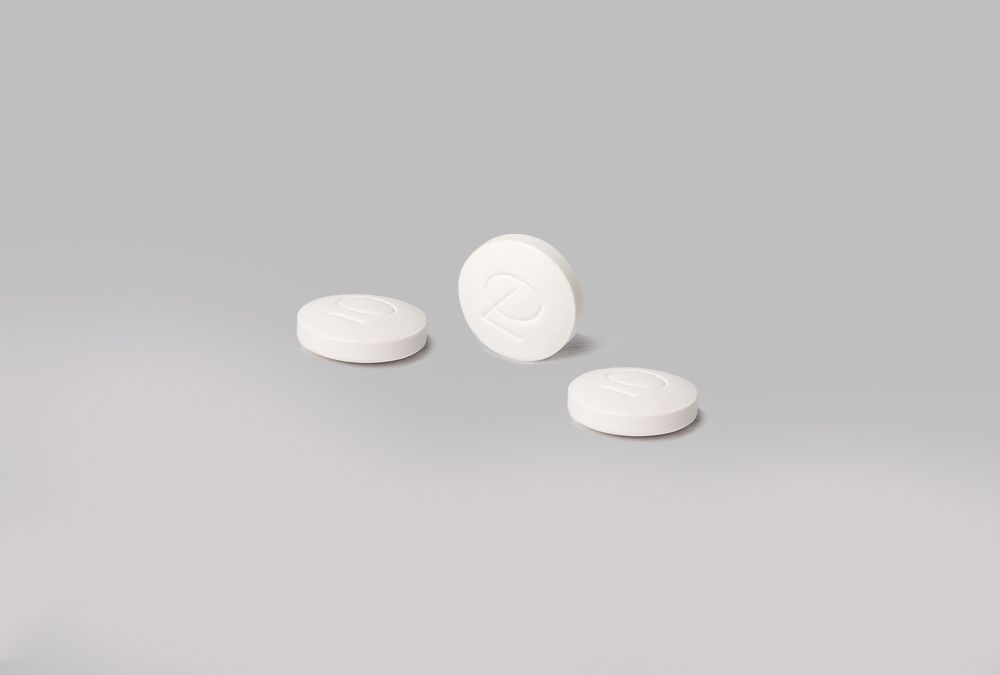Brand Name : MOVEX
Generic Name : Aceclofenac
Preparation : 100 mg Tablet
Pharmacological Category : NSAID (Non-steroidal Anti-inflammatory Drug)
Mechanism of Action (MOA)
MOVEX (Aceclofenac) inhibits COX-2 preferentially thereby inhibiting production of PGE2 including interleukin (IL-1β) and tissue necrosis factor (TNF). Therefore, MOVEX reduces inflammation. In addition, MOVEX stimulates glycosaminoglycan synthesis by suppressing metalloprotease and proteoglycan release in synovial cell.
Pharmacokinetics
- Absorption : Well absorbed from the gastrointestinal tract
- Peak Plasma Concentration : 1 to 3 hours
- Protein Binding : More than 99%
- Metabolism : Liver (metabolites : 4-hydroxyaceclofenac (primary), 5-hydroxyaceclofenac, diclofenac, 5-hydroxydiclofenac and 4-hydroxydiclofenac)
- Elimination Half-life : About 4 hours
- Excretion : Urine and faeces
Indications and Dosage
Osteoarthritis, Rheumatoid Arthritis, Ankylosing Spondylitis, Low Back Pain, Post-Traumatic Pain, Sprains and Strains, Dental Pain, Gynaecological Pain: One tablet of MOVEX 100 mg twice daily
Side Effects
COMMON : Gastrointestinal discomfort, nausea, diarrhoea, peptic ulceration, severe gastrointestinal bleeding
OTHERS : Headache, vertigo, dizziness, insomnia, tinnitus, depression, drowsiness, insomnia, fever, angioedema, bronchospasm, rashes, visual disturbances, anemias, thrombocytopenia, neutropenia, eosinophilia, agranulocytosis, interstitial nephritis, nephrotic syndrome, renal failure, hematuria, nephropathy (long term use), fluid retention, photosensitivity
RARE : Hepatotoxicity, aseptic meningitis, heart failure in susceptible patients, alveolitis, pulmonary eosinophilia, pancreatitis, Stevens-Johnson syndrome, toxic epidermal necrolysis
REPORTED : Induction or exacerbation of colitis
Contraindications
Active peptic ulceration, moderate heart failure, ischaemic heart disease, peripheral arterial disease, cerebrovascular disease, patients with history of hypersensitivity reactions including those in whom attacks of asthma, angioedema, urticaria or rhinitis have been precipitated by aspirin or other NSAIDs
Warnings / Precautions
- NSAIDs may be taken with or after food, milk or H2 antagonists, PPIs to reduce the risk of gastrointestinal effects.
- Caution in patients with hypertension, infections (symptoms may be masked), asthma or allergic disorders, haemorrhagic disorders, impaired renal or hepatic function and elderly patients.
- Monitor for the development of blood, kidney, liver or eye disorders
- Caution in pregnant women; may delay the onset of labour and duration; use at third trimester may result in premature closure of fetal ductus arteriosus.
Drug Interactions
- NSAIDs enhance the effects of oral anticoagulants and increase the plasma concentrations of lithium, methotrexate and cardiac glycosides.
- The risk of nephrotoxicity may be increased if given with ACE inhibitors, ciclosporin, tacrolimus, or diuretics.
- Increased risk of hyperkalemia with ACE inhibitors, potassium sparing diuretics
- Antihypertensive effects of ACE inhibitors, beta blockers and diuretics may be reduced when given with NSAIDs.
- Convulsions may occur due to an interaction with quinolones.
- NSAIDs may increase the effects of phenytoin and sulfonylurea antidiabetics.
- The risk of gastrointestinal bleeding and ulceration associated with NSAIDs is increased when used with corticosteroids, SSRIs, SNRIs, venlafaxine, antiplatelets (clopidogrel, ticlopidine), iloprost, erlotinib, sibutramine, alcohol, bisphosphonates or pentoxifylline.
- When NSAIDs is given with zidovudine, there may be increased risk of haemototoxicity.
- Ritonavir may increase the plasma concentrations of NSAIDs.
Pregnancy Category : C during first two trimesters; D during third trimester
Presentation
MOVEX100 mg : A box of 20 blisters, each blister of 10 tablets



